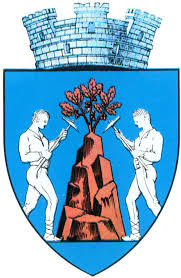 Baia Sprie
Baia Sprie

Baia Sprie is a town in the Maramureş County, northern Romania. The Hungarian version of the town's name means "Upper Mine".
There are four settlements under the same township's administration of Baia Sprie: the town proper and the villages of Chiuzbaia, Satu Nou de Sus and Tăuţii de Sus. Neighbouring communities are the city of Baia Mare and the villages of Groşi, Dumbrăviţa, Şiseşti and Deseşti. Of the township's total population, about 11,500 live in the town of Baia Sprie, with a Romanian majority and a Hungarian minority of about 28%.
The town was one of the most important mining centers in north-western Romania, exploitation of gold and silver being mentioned in documents written around 1411, the time when the Saxons colonized the region. However, recent administrative changes and restructuring of the Romanian mining industry brought this activity to an almost complete halt.
The first written mention of the settlement dates back to 1329 as "Civitas in medio monte". The town was in Szatmár County, in the Kingdom of Hungary. King Sigismund, Holy Roman Emperor, as part of treat with Serbian ruler Despotus Stefan Lazarević, gave him Baia Sprie as a gift, at 1411., until Depotus' death in 1426. A year after, lord of Baia Sprie became Stefan's succesor Despotus Đurađ Branković of Serbia. In 1567, it was annexed by Prince János Zsigmond, prince of Transylvania. In 1605 - 1606, 1621 - 1629 and 1645 - 1648 the town and the county were part of the Principality of Transylvania.
In the 1910 census, the following languages were spoken in the township: Hungarian language 93.8%, Romanian language 5.2% and others 1.0%. At the same census the following religions were represented: Roman Catholic 52.1%, Greek Catholic 28.1%, Calvinist 13.3%, Judaism 6.1% and others 0.5%.
From the 1919 to 1940 the town was part of the Kingdom of Romania. Between 1940 and 1944 it was part of Hungary and after 1944 the town is in Romania. The township belonged alternately to the Baia Mare Region (in 1952 - 1960); Maramureş Region (1960 - 1968) and, as of 1968, Maramureş County.